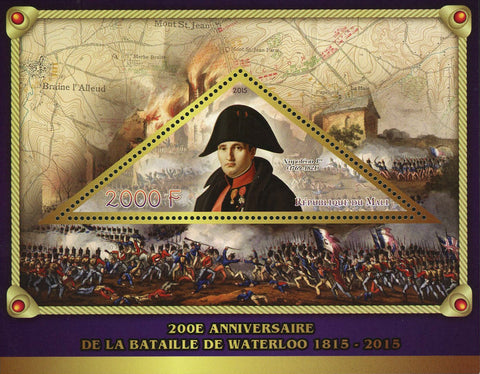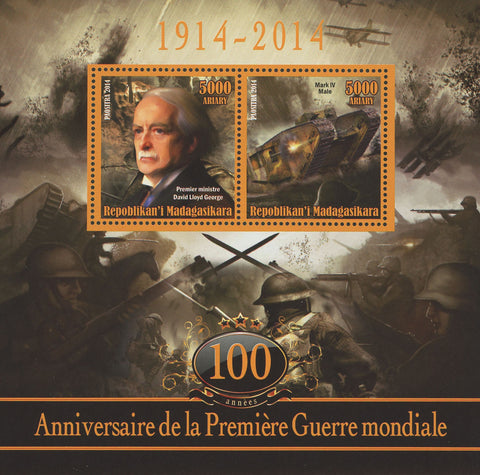Mali Great Battles Kursk Souvenir Sheet of 4 Stamps Mint NH
The Battle of Kursk was a Second World War engagement between German and Soviet forces on the Eastern Front near Kursk (450 kilometres or 280 miles south-west of Moscow) in the Soviet Union, during July and August 1943. The battle began with the launch of the German offensive, Operation Citadel (German: Unternehmen Zitadelle), on 5 July, which had the objective of pinching off the Kursk salient with attacks on the base of the salient from north and south simultaneously. After the German offensive stalled on the northern side of the salient, on 12 July the Soviets commenced their Kursk Strategic Offensive Operation with the launch of Operation Kutuzov (Russian: Кутузов) against the rear of the German forces in the northern side. On the southern side, the Soviets also launched powerful counterattacks the same day, one of which led to a large armoured clash, the Battle of Prokhorovka. On 3 August, the Soviets began the second phase of the Kursk Strategic Offensive Operation with the launch of Operation Polkovodets Rumyantsev (Russian: Полководец Румянцев) against the German forces in the southern side of the Kursk salient.
The battle was the final strategic offensive that the Germans were able to launch on the Eastern Front. Because the Allied invasion of Sicily had begun, Adolf Hitler was forced to have troops training in France diverted to meet the Allied threat in the Mediterranean, rather than use them as a strategic reserve for the Eastern Front. Hitler canceled the offensive at Kursk after only a week, in part to divert forces to Italy. Germany's extensive losses of men and tanks ensured that the victorious Soviet Red Army enjoyed the strategic initiative for the remainder of the war.
The Germans hoped to weaken the Soviet offensive potential for the summer of 1943 by cutting off the forces that they anticipated would be in the Kursk salient. The Kursk salient or bulge was 250 kilometres (160 mi) long from north to south and 160 kilometres (99 mi) from east to west. The plan envisioned an envelopment by a pair of pincers breaking through the northern and southern flanks of the salient. Hitler believed that a victory here would reassert German strength and improve his prestige with his allies, who were considering withdrawing from the war. It was also hoped that large numbers of Soviet prisoners would be captured to be used as slave labour in the German armaments industry.
The Soviet government had foreknowledge of the German intentions, provided in part by the British intelligence service and Tunny intercepts. Aware months in advance that the attack would fall on the neck of the Kursk salient, the Soviets built a defence in depth designed to wear down the German armoured spearhead. The Germans delayed the offensive while they tried to build up their forces and waited for new weapons, mainly the new Panther tank but also larger numbers of the Tiger heavy tank. This gave the Red Army time to construct a series of deep defensive belts. The defensive preparations included minefields, fortifications, artillery fire zones and anti-tank strong points, 300 km (190 mi) deep. Soviet tanks were moved out of the salient to form a large reserve force for counter-offensives.
The Battle of Kursk was the first time in the Second World War that a German strategic offensive was halted before it could break through enemy defences and penetrate to its strategic depths. The maximum depth of the German advance was 8–12 kilometres (5.0–7.5 mi) in the north and 35 kilometres (22 mi) in the south. Though the Red Army had succeeded in winter offensives previously, their counter-offensives after the German attack at Kursk were their first successful summer offensives of the war.
Fast & Free Shipping within U.S.A.
We Care for your order, Pack it carefully and ship it within 24 hours.
Satisfaction Guaranteed!
Please explore our store for more stamps, souvenir sheets, post-office collectibles and philately books and pre-philatelic items:
montecinos.philately



















